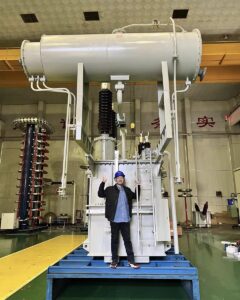Picking the wrong transformer can waste thousands of dollars and delay your renewable energy project for months. Many developers in Canada struggle with this decision, especially with our extreme climate challenges.
To choose the right transformer for use in Canada, assess your actual power needs, consider environmental factors, ensure proper certification (cUL/CSA), match voltage requirements, and account for future expansion. Focus on long-term reliability over initial cost savings.
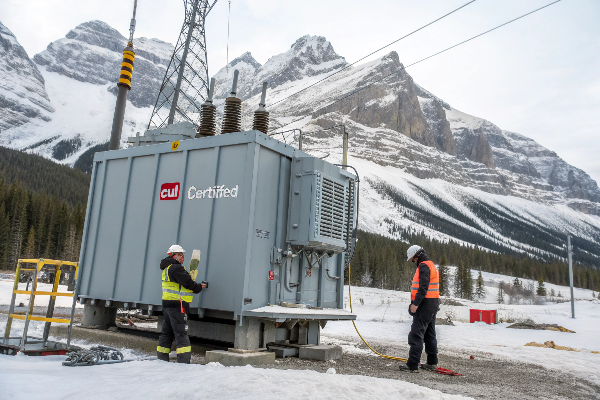
I've seen countless renewable energy projects stall because of transformer selection mistakes. The right transformer is not just about technical specs—it's about ensuring your entire system works reliably in Canada's unique conditions. Let's break down how to make this critical choice correctly.
How Do I Know Which Transformer to Use?
Choosing the wrong transformer can lead to system failures, safety hazards, and expensive replacements. I've seen projects face complete shutdowns in winter due to improper transformer selection.
Start by defining your load requirements, voltage needs, and installation environment. Then match these against transformer types (dry-type or liquid-filled), temperature ratings, and certification standards. Canadian installations specifically require cUL or CSA certification.
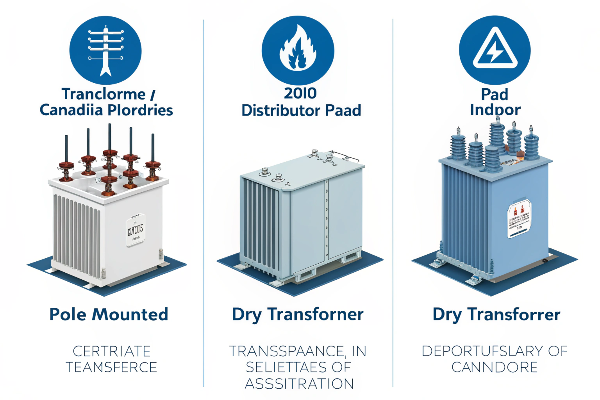
When selecting transformers for Canadian applications, I always recommend starting with a detailed analysis of your actual power needs rather than relying on theoretical maximums. This approach has saved many of my clients from the common and costly mistake of excessive oversizing.
Key Selection Factors
| Factor | Considerations | Canadian Context |
|---|---|---|
| Temperature Rating | Minimum operating temperature | Must handle -40°C in northern regions |
| Certification | Required safety standards | cUL/CSA certification mandatory |
| Location | Indoor vs. outdoor placement | Weather protection for outdoor installations |
| Efficiency | Energy losses during operation | Higher efficiency typically required due to Canadian energy codes |
| Insulation | Material durability | Must withstand temperature fluctuations |
Beyond these technical specifications, consider the project's lifecycle costs. Many developers focus exclusively on purchase price, but I've found that operating efficiency, maintenance requirements, and expected lifespan often matter more in the Canadian context. For renewable energy applications specifically, transformers must handle variable inputs from solar or wind sources without degradation of performance or lifespan.
How to Determine the Correct Transformer?
Selecting an undersized transformer creates overheating and premature failure, while oversizing wastes money and reduces efficiency. I've fixed both mistakes repeatedly throughout my career.
To determine the correct transformer, calculate your total connected load (in VA/kVA), apply a demand factor based on usage patterns, add 25% capacity for future growth, and select the standard size above your calculated need. Then verify voltage compatibility and environmental ratings.
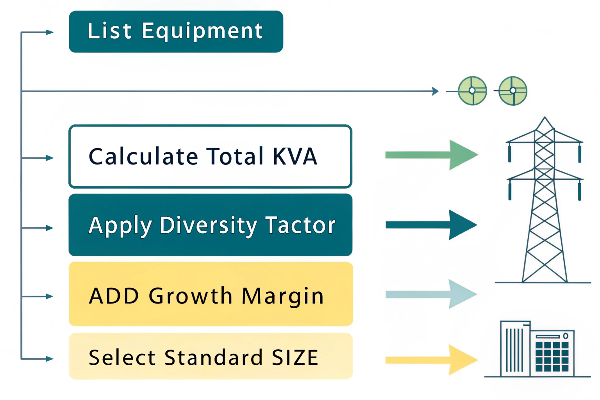
Drawing from my experience in the Canadian renewable energy sector, I've developed a systematic approach to transformer sizing that accounts for both current needs and future expansion.
Step-by-Step Sizing Process
- List All Loads: Document every piece of equipment that will connect to the transformer
- Calculate Connected Load: Sum the VA/kVA ratings of all equipment
- Apply Diversity Factor: Not all equipment runs simultaneously; adjust accordingly
- Consider Environmental Factors: Canadian climate requires special consideration
- Future-Proof: Add capacity for anticipated growth
In renewable energy applications, this process becomes more complex. Solar farms need transformers that can handle varying loads based on sunlight conditions, while wind power installations require transformers capable of managing sudden power fluctuations during gusty periods. The correct transformer should match not just your capacity needs but also your specific application requirements.
I recently worked with a solar farm in Alberta that initially selected transformers based solely on peak production capacity. This overlooked the need for transformers that could efficiently operate during low-production periods as well. By adjusting their selection to transformers with better partial-load efficiency, they improved overall system performance by nearly 8% annually.
Why Are Transformers Rated in VA or kVA?
Many clients find transformer ratings confusing, especially when comparing with other electrical equipment. I often have to explain why these unique measurements matter for system compatibility.
Transformers are rated in VA (volt-amperes) or kVA (kilovolt-amperes) because these units measure apparent power, which accounts for both real power (watts) and reactive power. This measurement accurately represents the transformer's capacity to handle electrical loads regardless of power factor.
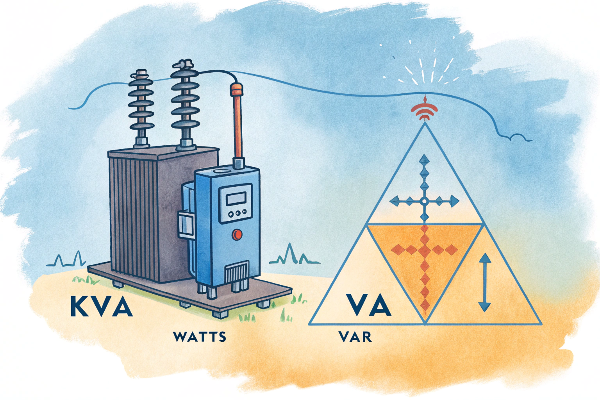
I like to explain VA/kVA ratings to clients as the transformer's "processing power." It represents the total electrical load a transformer can handle, not just the useful power that performs actual work.
Understanding Power Measurements
| Measurement | What It Represents | Application |
|---|---|---|
| Watts (W) | Real power (actual work performed) | Equipment output capabilities |
| Volt-Amperes (VA) | Apparent power (total power in circuit) | Transformer capacity |
| Power Factor | Ratio of real to apparent power | System efficiency indicator |
This distinction becomes particularly important in renewable energy systems where power factors can vary significantly. For example, in solar installations, inverters can cause power factor variations that must be handled by the transformer. Using VA/kVA ratings ensures the transformer has sufficient capacity regardless of these fluctuations.
In the Canadian context, understanding these ratings is critical because our electrical codes and utility requirements are specifically based on these measurements. When I help clients select transformers for Canadian renewable energy projects, I emphasize that proper VA/kVA sizing is not just about technical performance—it's about compliance with local regulations and utility interconnection requirements that specifically reference these ratings.
How Many Houses Can a 50 kVA Transformer Handle?
This question comes up often when planning residential developments or neighborhood solar projects. The answer has changed dramatically over the years as household energy consumption patterns evolve.
A 50 kVA transformer can typically handle 4-6 modern Canadian homes, depending on size, electric heating needs, and presence of EV chargers. Older calculations suggesting 10-12 homes are outdated due to increased per-household electricity consumption and greater peak demand.
 servicing Canadian homes residential transformer capacity](https://voltoritransformer.com/wp-content/uploads/2025/08/image-5-prompt-create-a-3d-render-style-image-s.png)
When I consult on residential power projects, I've noticed a significant shift in how we calculate home electrical requirements. This change reflects the evolving way Canadians use electricity.
Modern Home Power Requirements
| Home Feature | Additional Load | Impact on Capacity |
|---|---|---|
| Electric Heating | 10-15 kVA | Reduces homes per transformer by 50% |
| EV Charging | 7-11 kVA | Can reduce capacity by 1-2 homes |
| Home Office | 1-2 kVA | Minimal individual impact but adds up |
| Modern Appliances | 2-3 kVA more than older homes | Reduces total home capacity |
The traditional rule of thumb that a 50 kVA transformer could handle 10-12 homes was based on average consumption patterns from the 1980s and 1990s. Today's reality is quite different. In my work across Canada, I've found that modern homes with electric heating, multiple high-draw appliances, and EV chargers can easily peak at 15-20 kVA each.
Climate considerations also play a role in this calculation. Northern Canadian communities with greater heating requirements need additional capacity, while homes with solar installations may reduce their grid demand but need transformers that can handle bidirectional power flow. When designing neighborhood-level renewable energy systems, these factors must be carefully balanced against transformer ratings.
Conclusion
Selecting the right transformer for Canadian applications requires careful analysis of load requirements, environmental conditions, and certification standards. Proper sizing and selection will ensure reliability and compliance while controlling long-term costs.
For expert guidance on transformer selection for your renewable energy project, contact Voltori Energy—we design custom transformers that meet Canadian standards for reliable, efficient power conversion.


